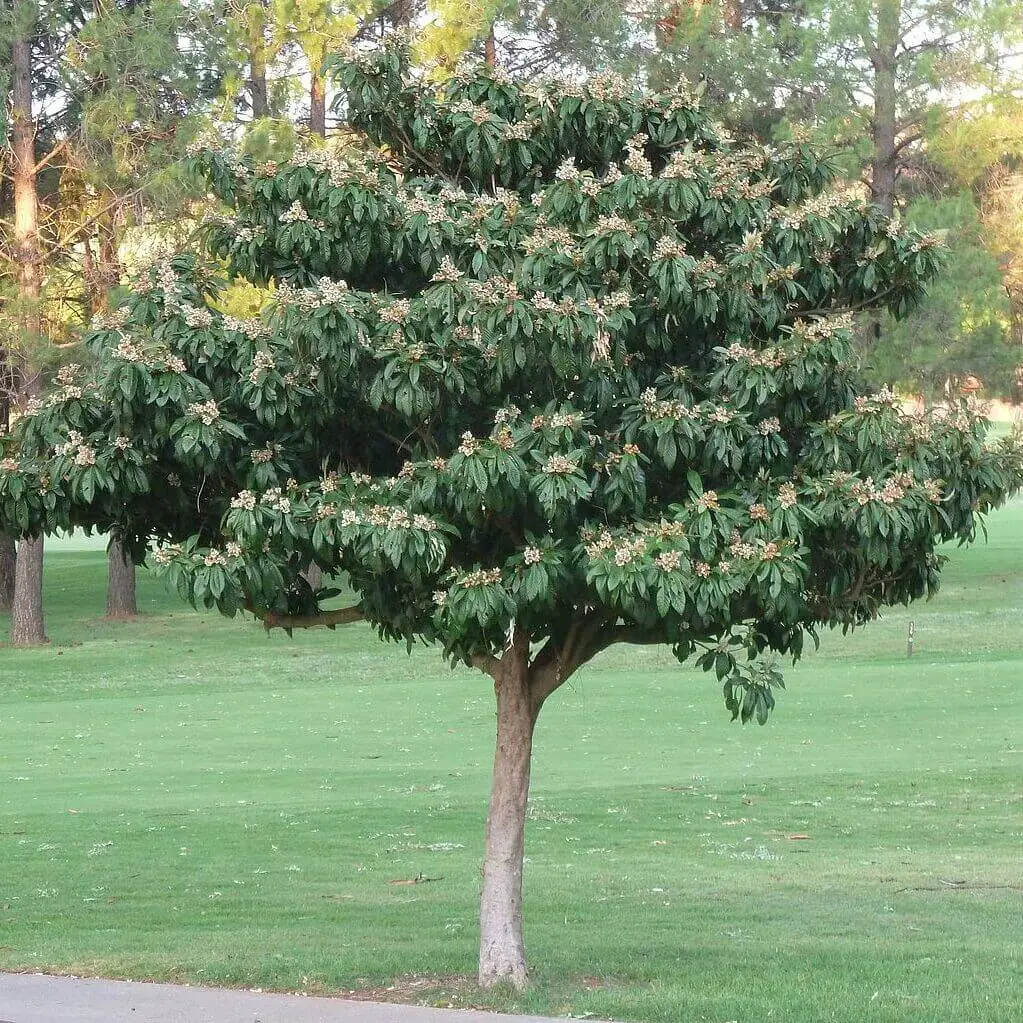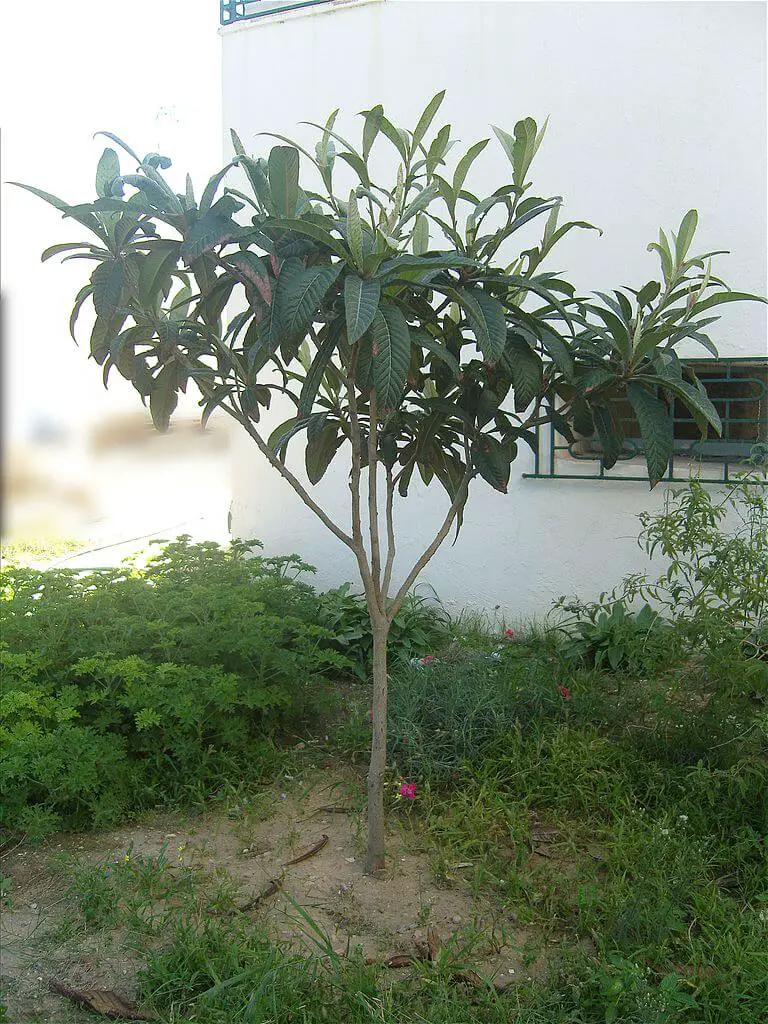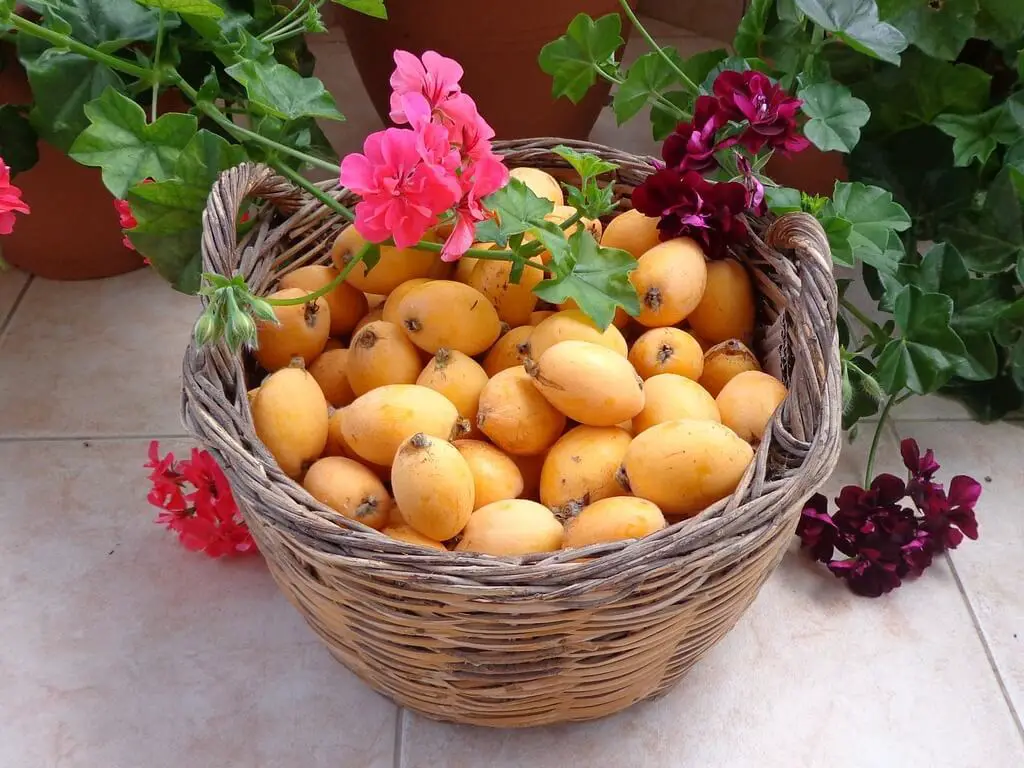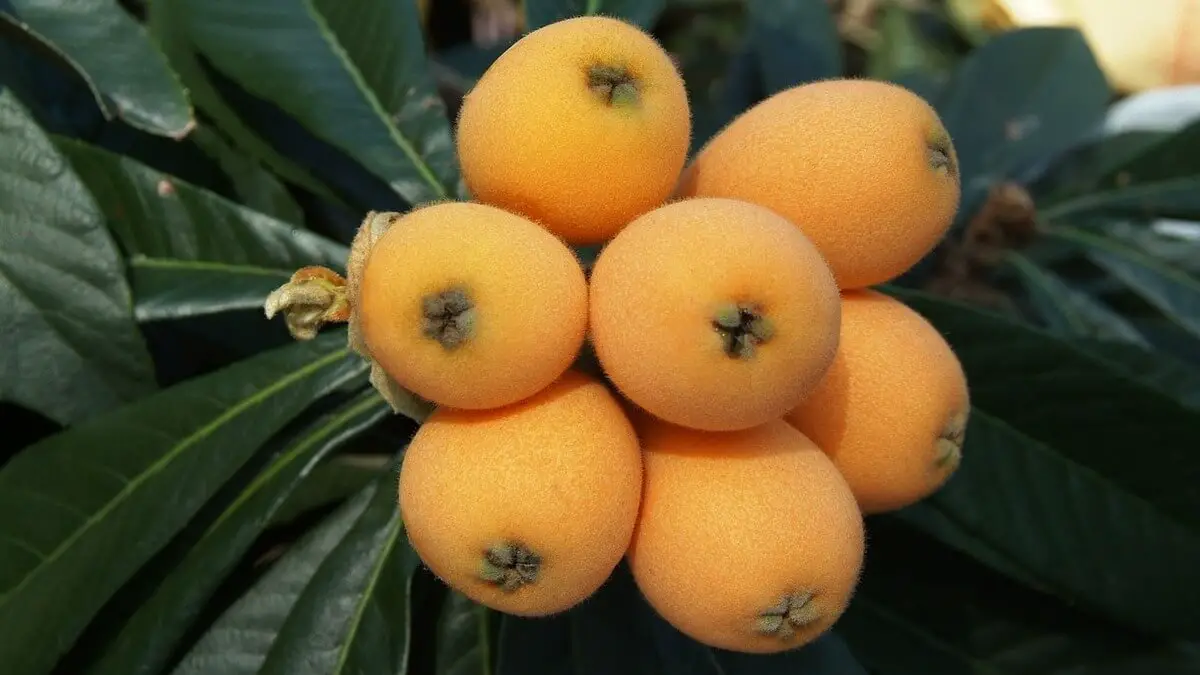How to Grow Japanese Plum Trees (Loquat Trees)
Some edible fruit-producing trees are commonly called Japanese plum trees. They include Prunus salicina, Prunus mume, and Loquat (Eriobotrya japonica). This article mainly focuses on Japanese plum trees (Loquat), their propagation, pollination, harvest, and uses.
Generally, the Japanese plum trees (Loquat) are small trees or large evergreen shrubs. They belong to the Rosaceae family. Previously, some biologists thought these trees have close relations with the genus Mespilus. So, they called it Japanese medlar. The other names for Loquat trees include Chinese plum(pipa), Japanese plum, and nespolo (in southern Italy).
In fact, these trees are native to the cool mountainous regions of south-central China. Japan, the neighbor of China, has been a home to these trees for over a millennium.
In modern times, these trees have spread to regions ranging from subtropical to mild temperate, all around the world.
Most gardeners grow them for their yellow or orange colored delicious fruits. The flavor of these fruits is almost like a combination of peach and apricot.
Japanese use the leaves of these trees for making tea (biwa cha). In extreme climates, these trees cannot bear fruits. Gardeners in such areas grow these trees for ornamental purposes.
Table of Contents
Description of Japanese Plum Trees (Loquat Trees)

Photo by JMK (Wikimedia Commons) (CC BY-SA 4.0)
The Japanese plum trees (Loquat trees) are generally, small trees or large evergreen shrubs. They usually have short trunks, rounded crowns and woolly twigs.
These trees can grow up to 10 meters (33 feet). The fruits ripen any time between spring and summer, depending on the climate and temperature. The alternate, simple leaves grow 10 -25 cm (4–10 inches) long. These tough, dark green leaves have a leathery texture and serrated margins
Fruits of Japanese Plum Trees (Loquat Trees)

Normally, the Japanese plum trees sprout flowers usually in autumn or winter. The fruits ripen anytime from spring to summer depending on the climate and temperature. This is an unusual character compared to that of other fruit-bearing trees.
Generally, the flowers develop in groups (panicles). Each panicle has 3 – 10 flowers. These white flowers measure about 2 cm in diameter and have five petals. They usually have a sweet, strong, and beautiful (heady) scent that can exhilarate anyone smelling them.

Mostly, the fruits are in an oval shape. Sometimes they can be pear-shaped or rounded too. They usually are 3 -5 cm (1–2 inches) long. The yellowish or reddish skin of these fruits is usually smooth or downy. Normally, the tangy flesh of this fruit is yellow, white, or orange. Its taste varies from sweet to acidic, depending on the type of cultivar.
Usually, each fruit has a different number of ovules ranging from one to ten. Not all the ovules develop into seeds. So, you can find a varying number of seeds (usually 3 – 5) in every fruit. These seeds are large and brown in color.
Upon ripening, the fruits have soft and pale orange skins. They also taste better. The flavour is like a mixture of peach, mild mango, and citrus.
Pollination of Japanese Plum Trees (Loquat Trees)
Normally, the pollinator (usually bees and small birds) pollinates the Japanese plum trees (Loquat and golden yellow varieties). However, some varieties such as Tanaka, Advance and ‘Pale Yellow do partially self- pollinate.
Studies indicate cross-pollination has more success ratio compared to self – pollination. The Tanaka variety almost doubles the yield when cross-pollinated with the Advance variety.
Climate
Nowadays, the Japanese plum trees (Loquat trees) have well adapted from subtropical to mild-temperate climatic regions. In China, they grow in the hilly regions at various altitudes ranging from 3,000 ft to 7,000 ft. In Guatemala, they bear very little or no fruit in altitudes less than 3,000 feet.
Matured and well-established Loquat trees can tolerate temperatures as low as 12-degree Fahrenheit (-11.11 C). However, at 25-degree Fahrenheit (-3.89 C), the fruits fall off from trees as the seeds inside them die completely. These studies are conducted in many parts of the world, including Japan and China.
Extremely hot temperatures are proven to be detrimental to these trees. Some regions are extremely hot or extremely cold. Gardeners in those areas can grow Japanese plum trees (Loquat trees) as ornamental plants. It is because these trees can bear very little or no fruit in those temperatures.
Propagation
The Loquats can grow on various moderate fertility soil varieties including light sandy loam, heavy clay, and oolitic limestone. Make sure the soil is not saline and has a good drainage facility.
These trees prefer to grow under full sunlight. But they can thrive in partially shaded areas too. USDA recommends Hardiness Zones 8-10 for growing these trees.
Generally, these trees can tolerate low temperatures (up to 12-degree Fahrenheit). But the fruits and flowers die when the temperature lowers to about 25-degree Fahrenheit
Growing Japanese Plum Trees (Loquat Trees)

Photo by Habib M’henni (Wikimedia Commons) (CC BY-SA 3.0)
If you grow Japanese plum trees (Loquat trees) from seeds, you can expect harvest usually in about a decades’ time.
Hence, most gardeners prefer to grow these locusts from seedlings. You can expect a harvest in just about 2-3 years from seedlings. You can also easily purchase seedlings from online stores such as Amazon or any nursery gardens nearby.
Most sellers ship growing instructions with the seedlings, along with their contact information. If you have any doubts, you can contact them directly. Most professional sellers will be happy to help you.
Some varieties like Big Jim’ are popular for less-acidic flavors. You can expect to receive a 2-3-foot tree in a one-gallon pot if you purchase them.
Caring Japanese Plum Trees (Loquat Trees)
Typically, loquat trees are drought tolerant. Watering them regularly, can help increase yield. However, donot overwater as it can be invitation to several pests and diseases
Similarly, they can grow well even without fertilizing. But feeding the soil with 6-6-6 (NPK) fertilizer (three times during the growing season) will increase the yield production.
Prune these trees minimally, as needed, to fit your landscape. Use sterilized, good quality garden shears to perform the job. Remove the deadwood and other debris. Always maintain cleanliness in the garden. This helps to prevent pests and diseases.
Harvest

Normally, the Loquat fruit ripens in about 90 days after the flowers fully open. These matured fruits are soft and yellow or orange in color. At this stage, you can pull off the fruits gently and easily from the stems.
Make sure to harvest them before they fall off. Otherwise, they may become messy on the ground and lose commercial value.
Generally, the squirrels and other like critters, tend to eat Loquat fruits both on and off the tree. This is not a matter of concern as the fruits develop in large numbers.
Some Loquat fruits stick to the stalks and may not separate easily. In those cases, never try to pull off the fruits. Otherwise, the skin may tear off while harvesting.
Using good quality garden clippers, cut off the fruit clusters as a whole and collect them in buckets. You can also try to cut individual fruits along with the stalks from the tree itself. But this process is time-consuming and a little bit tough.
After collecting them, cut off the individual fruits from clusters and stalks. Grade them according to color and size. Finally, weigh them and pack them uniformly. You can sell these Loquat fruit packets in the market.
Storage
Generally, you can store Loquat fruits for about a week at room temperatures. If you store them in refrigerators, the shelf life may extend to 1-2 months, depending on the quality of the fruit.
If possible, avoid using polyethylene bags to store the fruit in refrigerators. They may alter the fruit flavor, cause internal browning, and even promote fungus development.
If you take out the fruits from refrigeration, use them within 2-3 days. To extend the shelf-life up to one month, treat the fruits with benomyl (fungicide) and maintain the room temperature at 60-degree Fahrenheit (15.56º C). In this method, the fruits may suffer minimal decay.
Pests and Diseases
Typically, the Japanese plum trees (Loquat trees) are fairly free from pests and diseases. However, common pests and diseases do bother them.
Black scale
Generally, the sooty mold fungus causes black-scale infections on locusts. The scale insects excrete carbohydrate-rich sticky honeydew. This substance acts as a substrate for the Fungai to grow.
Normally, scale insects suck the sap out of the foliage. If not treated, the foliage shrivels and the plants may die.
Blast off these insects with hose water. Then treat the infected trees with Bonide neem oil.
Other Diseases
Pear blight, Phytophthora, and root rot are some of the common diseases that affect the Japanese plum trees.
There is no cure for Pear blight. This disease can kill the tree in a quick time. Therefore, just pull off and dispose of the affected plant immediately. This prevents the disease from spreading to other plants.
However, you can prevent this disease by spraying antibiotics like streptomycin sulfate on foliage. Remember, this should be done before the disease attacks. You can also try spraying copper sulfate fungicide on open blooms.
You can treat diseases like Phytophthora and other pathogens with the application of Hydrogen Peroxide. Mix Hydrogen Peroxide (1 part) with water (3 Parts). Apply the mixture to the soil around the plant. Wait till the mixture penetrates into the soil (approximately an hour or two). After that, continue watering the plant as usual.
Generally, excessive watering and waterlogging causes root rots. if the root of the plant is damaged minimally, you can try removing the damaged part and replanting it in another location that has good drainage. Make sure to treat such plants with Hydrogen peroxide.
However, if root rot damages most parts of the roots, the plant cannot be saved. Pull off the entire plant and remove the debris as immediately as possible. This prevents the disease from spreading to other plants.
Nutrition Facts
Generally, the loquat fruits are rich in vitamin A, vitamin B6, manganese, potassium, and dietary fiber.
Like most of the plants in this variety, the young leaves and seeds of Japanese plum trees are slightly poisonous. They contain a small volume of cyanogenic glycosides. These chemical compounds release cyanide upon digestion
However, the concentration of the resulting cyanide is very low to cause any harm in humans.
Uses
Food

Generally, you can eat the fruits of Japanese plum trees (Loquat fruits) fresh and raw. They have a mixed, exciting flavor of citrus, mild mango, and also peach. It tastes even better with a combination of orange granules, sliced bananas, and grated coconut.
If you prefer to use this fruit with your dish, just stew it with sugar. You can use the resultant mixture as a side dish with various foods including bread and bakes.
If you are fond of pickles and related foodstuff, just prepare spiced loquats and store in traditional glass jars. spiced loquats usually contain cinnamon, cloves, salt, lemon, water, and vinegar.
In the food industry, it serves as a key ingredient in the production of various food items. Some of them include gelatin desserts, jams, jellies, sauces, and pie fillings. Taiwan exports canned Loquats.
Medical uses
Traditional medical practitioners believe Loquat fruits to have sedative and expectorant properties. They used medicines made from Loquats to induce sleep, treat vomiting sensations, thirsts, depression, relieve diarrhea, Etc.
Domestically, you can use dried Loquat leaves to counteract alcoholic intoxication. The application of Leaf poultices is said to soothe swellings. But as a caution, take advice from medical practitioners before applying these treatments.
Other uses
The young trees can also serve as fodder plants for animal consumption.
The wood of this tree is medium-heavy, pink, and closely grained. Some factories use this wood to make drawing instruments such as rulers and clips.
During the early 1950s, the perfume industries from Spain and France experimented with Loquat oils (extracted from flowers and leaves). The product was found to be appealing. But the yield was very less for industrial productions. So, they aborted the idea.
Similar Posts
How to Grow Swan River Daisy Plants
How to Grow an Asian Pear Tree

